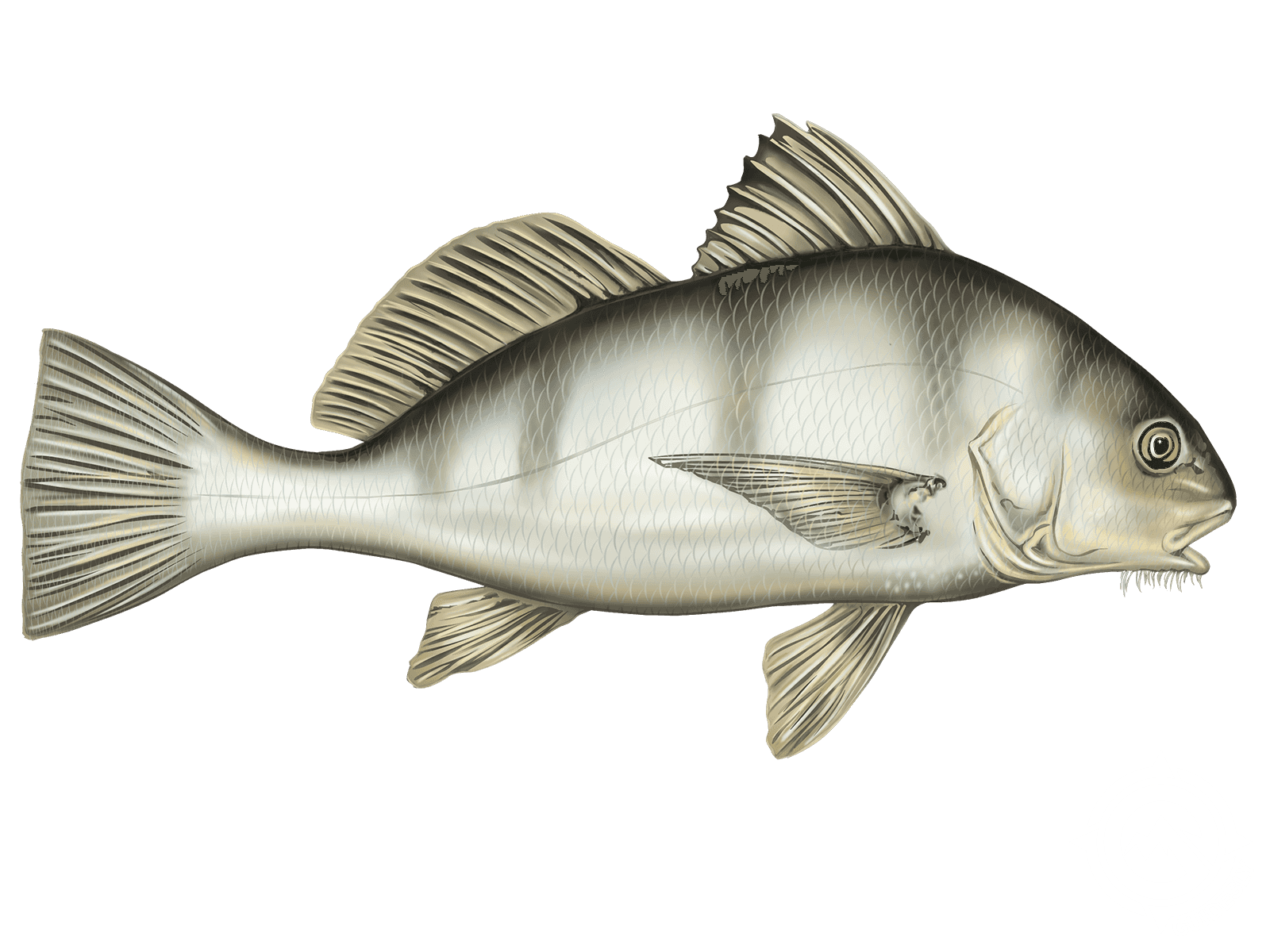Black Drum

Species Details
Pogonias Cromis
Sciaenidae
Perciformes
Brackish Waters, Onshore
15 - 90 lbs.
"
Black Drum (Pogonias Cromis)
Black Drum Description
The Black Drum is a fish in the Sciaenidae family. The Black Drum is also the largest fish of that family, including almost 300 species, including their popular cousin, the Redfish. They are known as drums or croakers due to the repetitive drumming or croaking sounds they make. They are black and or grey and have powerful jaws with strong teeth capable of crushing prey like shellfish and oysters.
Black Drum Size
The Black Drum's typical weight range varies considerably from 5 to 30 pounds but can reach a weight of up to 90 pounds. If you intend to eat your catch, you may want to release Black Drum over 15 pounds. As they grow larger, the meat is tough and more comparable to chicken than a flaky texture. Also, the flavor of the older fish is not as tasty as the smaller-sized fish.
Black Drum Spawning
Black Drum have mating calls that they use to seek out others during the spawning season, capable of producing tones that reach 100 to 500 Hz. Black Drum grow rapidly and reach maturity within the first 2 years of their lives and live to 50 years. The females can lay eggs every three days during the spawning season. Their spawning seasons vary due to location, spawning occurring in February and March in southern areas like Texas, and April to June farther north.
Black Drum Habitat
Black Drum typically prefers brackish waters and estuaries. The adults live closer to the saltier areas near the ocean. They can be found around an oyster bed and other areas with plentiful food sources. The juveniles prefer the less salty areas of the same estuaries with sandy bottoms. Black drum are extremely adaptable when it comes to temperatures and salinity and can be attracted to freshwater creek openings and extremely shallow water, but are also found in depths of up to 100 feet.
Black Drum Fishing
You will find the best Drum fishing is on shallow water, muddy flats, and oyster beds, but they can also be found near inlets, pier pilings, creeks and estuaries that make way inward. Most anglers also fish for the Black Drum in the spring around the spawning season. At this time, the fish school up and are easier to target. After the spawning season, the fish disperse and become much harder to target.
Black Drum Bait and Lures
The best bait an angler can use for Drum fishing is live bait because they are bottom-feeders. Live bait such as fresh soft crabs, mollusk, peelers crabs, sea clam, or crushed mussels are the preferred bait. Anglers like to use crab because it does not tend to get eaten by catfish and other bait stealers. If you are not using live bait, then choose very slow-moving jigs like bucktail jigs. It is also vital to use the correct weighting for the conditions to ensure that your bait is on the bottom.
When fly fishing, most anglers prefer to use a 7- or 9-weight fly rod, leaning towards a 9-weight for throwing heavier flies and a little extra strength when pulling on fish that may be more than 20 pounds. You will want to present your fly on the bottom, and weighted black flies that get to the bottom quickly are best such as the Redfish Worm, Merkin, and Clouser Minnow.
Distribution and Range
The Black Drum has a wide range and extends as far north as Nova Scotia, down the whole Atlantic coast of the United States, Florida and the Gulf of Mexico.
Black Drum Regulations
Check the state you are fishing in as they each have their own regulations, but you will find most at 5 fish per day between 14 and 24 inches long, with one allowed over 24 inches.







